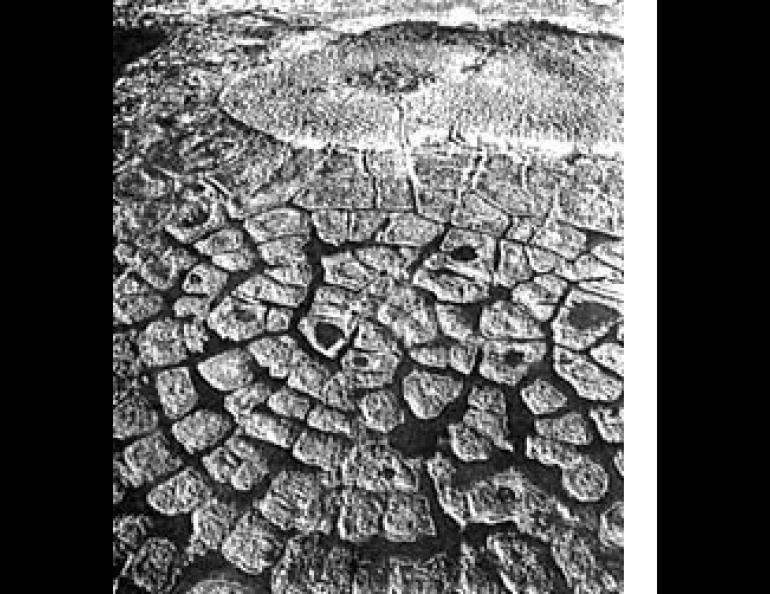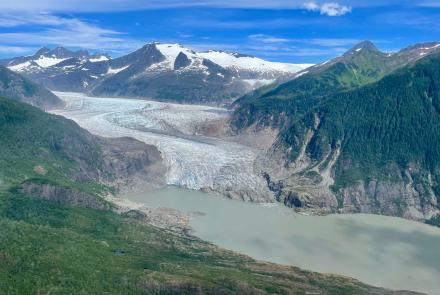
Ground Patterns in Nature
Have you ever stopped to consider how many inanimate things that we see in nature develop into geometrically arranged patterns? A mud flat drying in the sun (or a pie crust, for that matter) often displays a network of cracks that carve the surface into pieces of uniform size and shape. Columnar jointing patterns in basalt create displays like the Devil's Post Pile in California (a natural shrinkage phenomenon, and the topic of an earlier column ).
Cracked lake beds obviously result from shrinkage during desiccation. It's pretty clear what happens. The lake bed dries out and the surface layer shrivels up and breaks into pieces. So what?
Well, consider the shape of the pieces. They're almost always six-sided. Actually, there are only two basic regular shapes (that is, pieces with no interior angles greater than 180 degrees and with sides of equal length) into which a flat surface can be cut so that all the pieces are the same size and the same shape. These shapes are the square and the triangle. Hexagons also "cover the plane" (like the tiles on a bathroom floor) and are common in nature, but they are really nothing more than six triangles nested together.
The interior angles -- 60 and 90 degrees -- at which the sides of equilateral triangles and squares meet are common factors linking many forms of stress-induced breakage in nature. One can observe this in the laboratory by placing a rock sample in a vise and compressing it until it breaks. If the rock is of uniform grain, the initial fractures will occur along two planes intersecting at an angle of between 60 and 90 degrees, and oriented in such a manner that the direction of compression passes between them.
Not surprisingly, this is also the manner in which crustal breakage occurs during most earthquakes. Two potential planes of slippage develop as the crust is stressed, and faulting occurs along one of them when the strength of the crustal material is overcome.
To return to the cracks in the lake bottom or columnar jointing in basalt, the process is simply that of failure by tension, or compression in reverse. Breakage still occurs most commonly along network of planes which intersect at 60 or 90 degrees.
One example of this phenomenon is unique to the higher latitudes. Thousands of square miles in the Arctic are covered by ground which has been segmented into what are called tundra polygons or ice wedge polygons. This pattern is caused by intersecting honeycomb networks of shallow troughs underlain by more or less vertical ice wedges. The ice wedges are formed when the ground contracts and splits in a manner analogous to the formation of cracks on the dry lake bed. This allows water to enter, and successive seasons of repeated partial thawing, injection of water, and refreezing cause the wedges to grow. As they do, the strata to either side are turned up to enclose the polygon, and a lake may form in the center with the raised troughs at the margins. Drainage patterns typically follow the troughs, and where they meet, small pools may form. These are often joined by a stream which causes the pools to resemble beads on a string -- in fact, this type of stream form is called beaded drainage.
The pattern formed by a well-developed system of ice wedge polygons is striking, particularly when seen from the air. This is just another example of the many ways that nature can create intricate designs on the earth's surface without, so it would seem, even trying.




